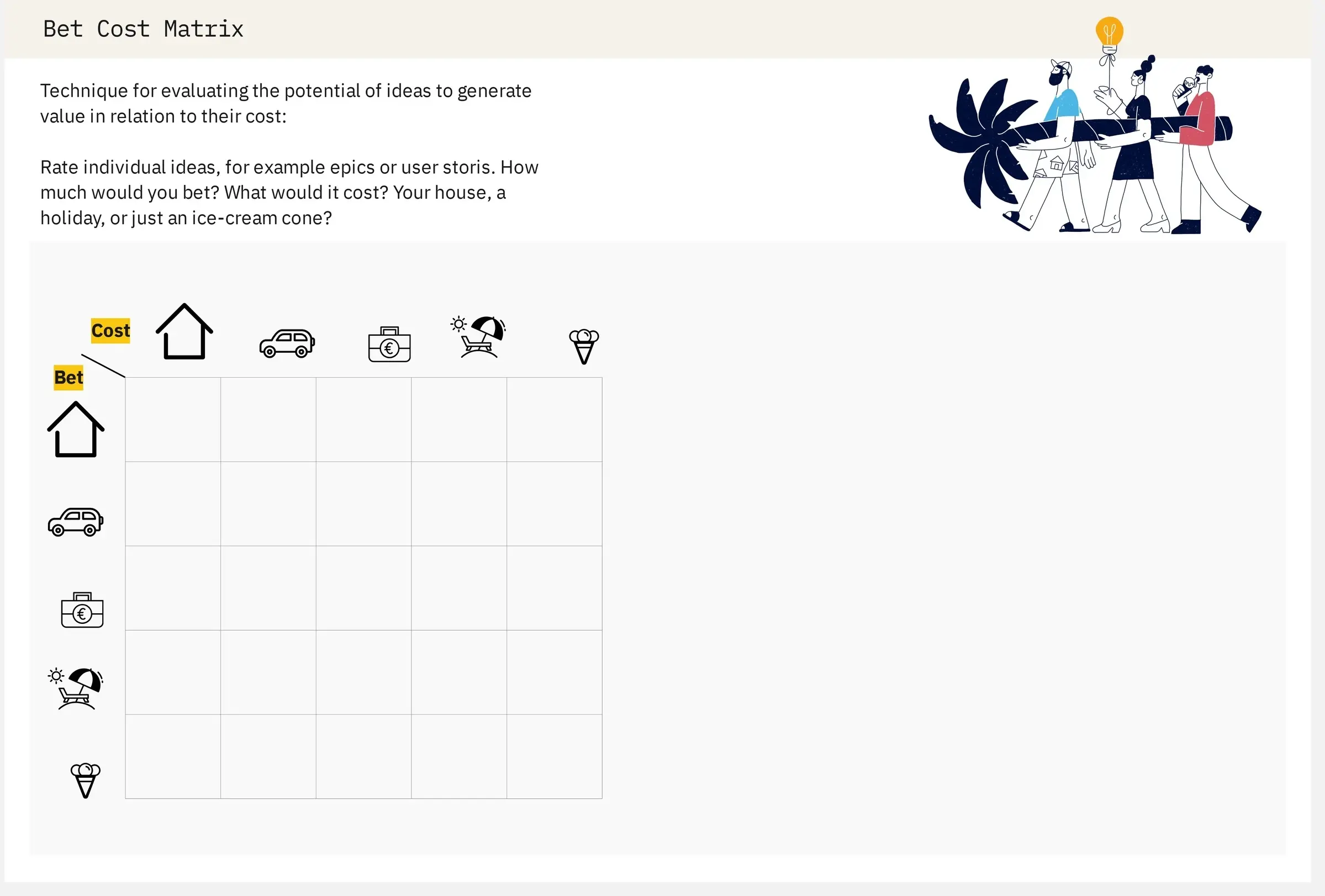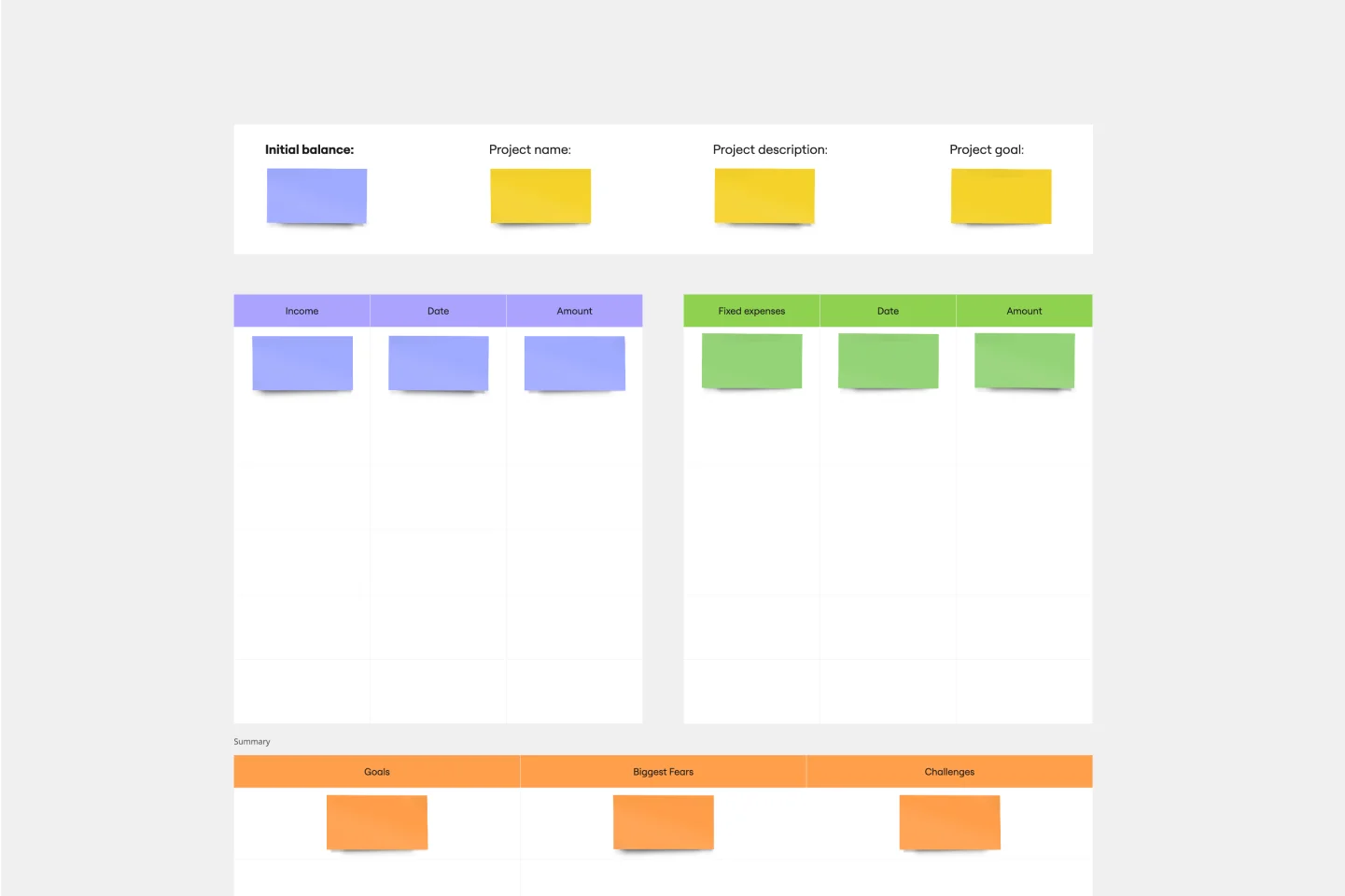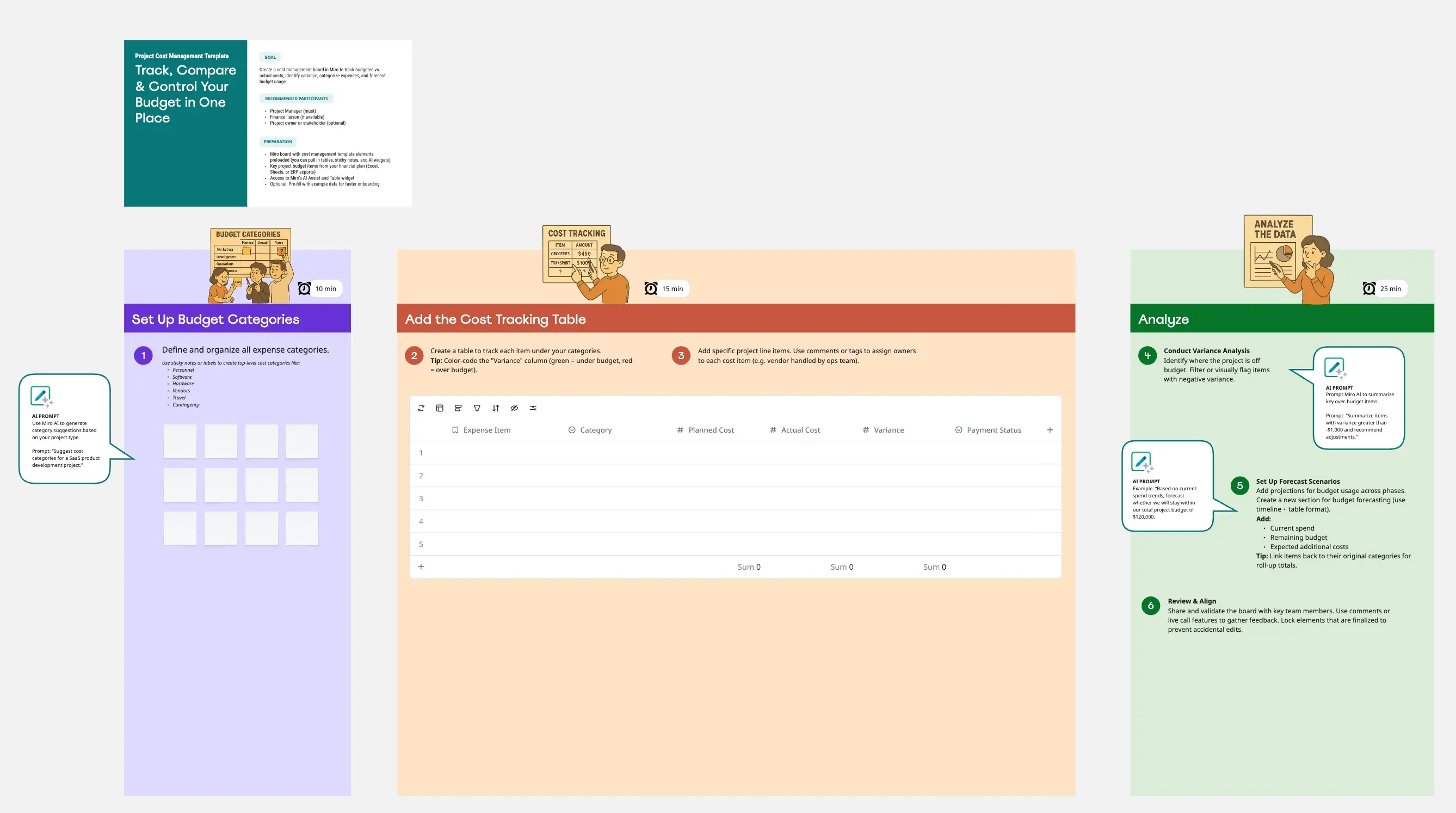About the Cost-Benefit Analysis Templates Collection
Our cost-benefit analysis templates help teams make informed decisions by weighing the costs and benefits of various options. These templates are perfect for people new to cost-benefit analysis and need a structured approach to evaluating their projects. With Miro's intuitive and visual planning tools, users can easily map out their analysis, ensuring that all factors are considered before making a decision.
Why you'll love our cost-benefit analysis templates
Using Miro's cost-benefit analysis templates offers many benefits:
Visual planning: Miro's templates allow you to visualize your analysis, making it easier to understand and communicate your findings to your team.
Structured approach: The templates provide a clear framework for conducting a cost-benefit analysis, ensuring
that no important details are overlooked.
Collaboration: Miro's collaborative features enable team members to work together in real time, adding their insights and feedback directly to the template.
Time-saving: By using a pre-designed template, you can save time on formatting and focus on the actual analysis.
Flexibility: The templates are customizable, allowing you to tailor them to your specific needs and preferences.
How to use the cost-benefit analysis templates in Miro
Define your objective: Clearly state the objective of your analysis. What decision are you trying to make? What options are you considering?
List costs and benefits: Use the template to list all the costs and benefits associated with each option. Be thorough and consider both direct and indirect factors.
Assign values: Assign monetary values to each cost and benefit. This step is crucial for quantifying the impact of each factor.
Analyze the sata: Use the template's built-in tools to analyze the data. Compare the total costs and benefits
for each option to determine which one offers the best value.
Collaborate and review: Share the template with your team and gather their input. Use Miro's collaboration features to discuss and refine your analysis.
Make a decision: Based on the analysis, make an informed decision. Document your findings and the rationale behind your choice in the template.
By following these steps, you can effectively use Miro's cost-benefit analysis templates to make well-informed decisions that drive your projects forward. These templates not only streamline the analysis process but also foster collaboration and ensure that all perspectives are considered, helping your team thrive.






